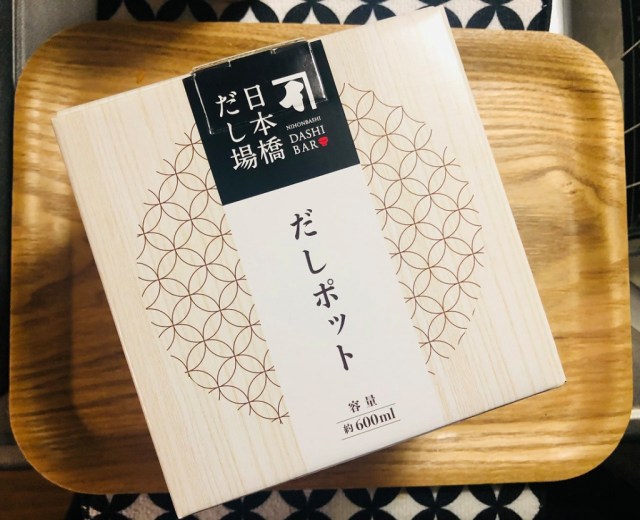
This simple device could change your Japanese cooking routine forever.
Dashi, or soup stock, is indispensable for cooking a large number of Japanese dishes. The stock is usually made by near-boiling kombu (kelp) and katsuobushi (bonito flakes) and then straining the resultant liquid, though it can also be made using sardines or shiitake mushrooms instead.
While not exactly difficult to make, the process of preparing it over the stove and then straining it definitely becomes tedious when you have to do it day after day. Using dissolvable bonito powder makes it a little easier, but we were intrigued upon learning about another less cumbersome way to make dashi using dried flakes–with the help of Ninben’s Dashi Pot.
▼ Dashi Pot and Katsuobushi Set (3,850 yen/US$35.70)
Well-established Japanese company Ninben has been making products related to katsuobushi and dashi for over 300 years. We got our hands on their popular Dashi Pot, which is composed of three main pieces: a heat-resistant glass pot, a mesh filter, and a lid.
The instructions seemed foolproof. When you’re ready to make dashi, simply assemble the mesh filter inside of the pot, add kombu, katsuobushi, and water, and heat it in the microwave without the lid. Then, latch the indented bottom of the mesh filter onto the rim of the glass pot to strain the liquid.
Here’s a video from Ninben demonstrating its simplicity:
So how does it stack up in real life? We were super excited to test it out for ourselves. We poured one 18-gram (0.63-ounce) bag of katsuobushi that came with the Dashi Pot and Katsuobushi Set into the mesh filter.
Next we poured in 600 milliliters (2.5 cups) of water.
After zapping it in the microwave for seven minutes and letting it strain, we were left with this beautifully golden, hassle-free dashi.
The Dashi Pot really was shockingly simple to use! This success called for a celebratory bowl of miso soup on the fly. Even though we only added green onions as an accent, the full-bodied flavor of the dashi and miso was more than enough to satisfy any cravings.
The pure simplicity of the device got us thinking–could the Dashi Pot be used for making different kinds of soup stock using ingredients other than katsuobushi? The instructional manual didn’t say anything about its potential or lack of potential thereof, so there was only one way to find out–by doing a little bit of kitchen experimenting.
First up we tried adding chicken thighs, green onion, and fresh ginger to make a chicken stock.
We weren’t sure exactly how much chicken to use and ended up estimating with about 80 grams of meat. Then we added the water and popped it in the microwave for a slightly longer 10 minutes.
The resulting strained stock looked pretty good, but the ginger definitely overpowered the other flavors. Adding some salt and pepper helped to take the edge off and turned it into a tasty chicken soup.
▼ The cooked chicken was also deliciously tender. We recommend sprinkling some ponzu sauce on it or making it into chicken salad.
Next up was making a stock from shrimp. We were worried that the kitchen would become incredibly smelly if we were to plunk whole shrimp into water the way they were, so we first roasted separated shrimp heads and shells on a pan over the stove to dry them out a bit.
We also weren’t entirely sure how many shells to add to the Dashi Pot and guessed by filling the mesh filter up about halfway.
A little bit of water, another 10-minute spin in the microwave, and then we quite literally held our breath…
…but roasting the shrimp bits ahead of time had worked like a charm. The air was fragrant with the smell of delicious seafood, but not in an overwhelmingly smelly way.
▼ The shrimp stock would go especially well with some salt, pepper, and sesame oil to make a Chinese-inspired soup.
All in all, Ninben’s Dashi Pot was a sound purchase. We wholeheartedly recommend it for anyone who needs to make dashi for Japanese cooking on a regular basis. If you need a reminder about how essential dashi is for the Japanese palate, just remember that Coca-Cola Japan even makes a drinkable dashi that you can purchase from vending machines.
Reference: Ninben
All images © SoraNews24
● Want to hear about SoraNews24’s latest articles as soon as they’re published? Follow us on Facebook and Twitter!
[ Read in Japanese ]


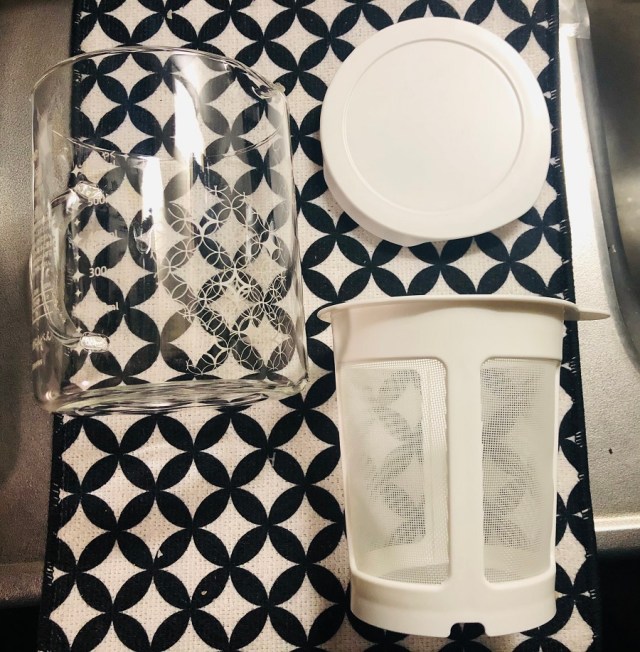
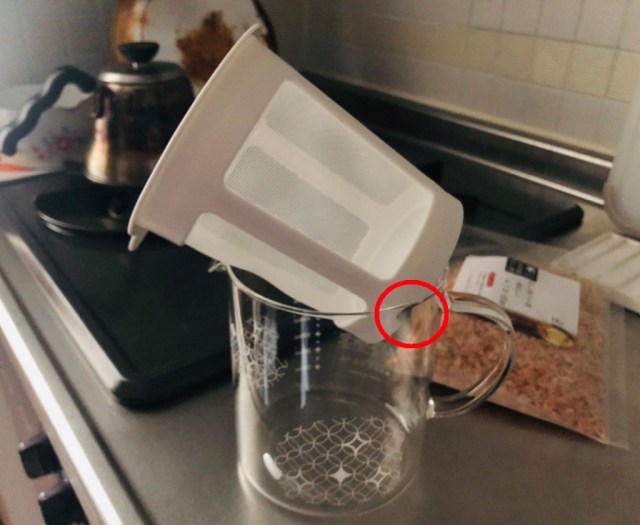
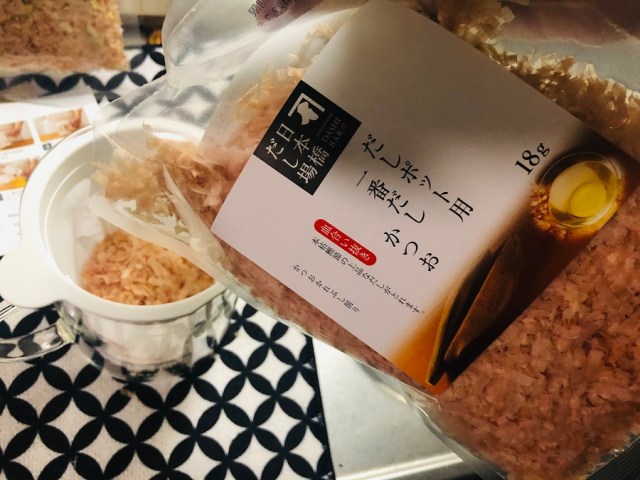
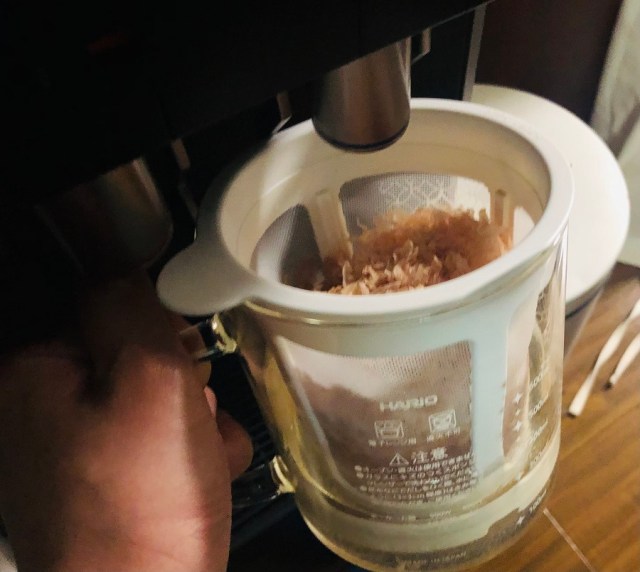
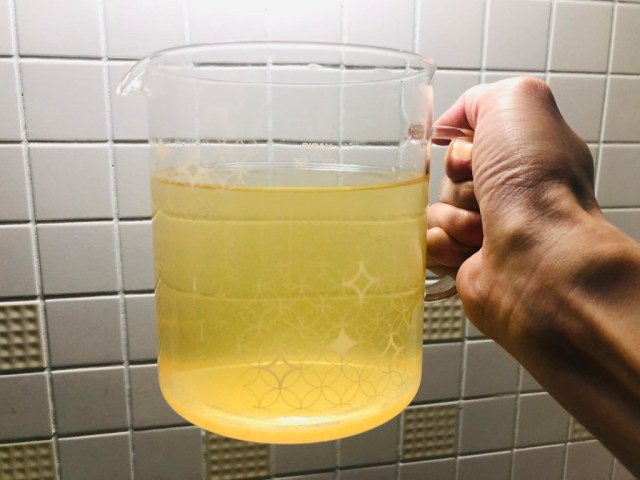
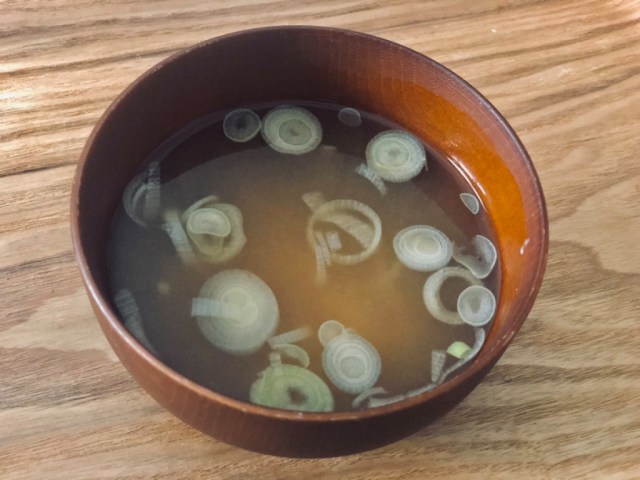
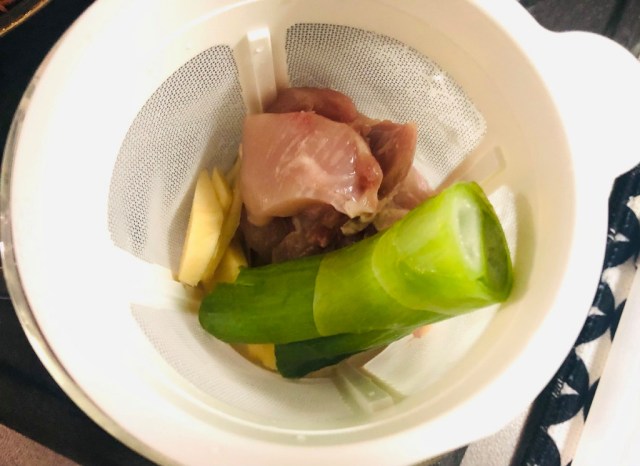
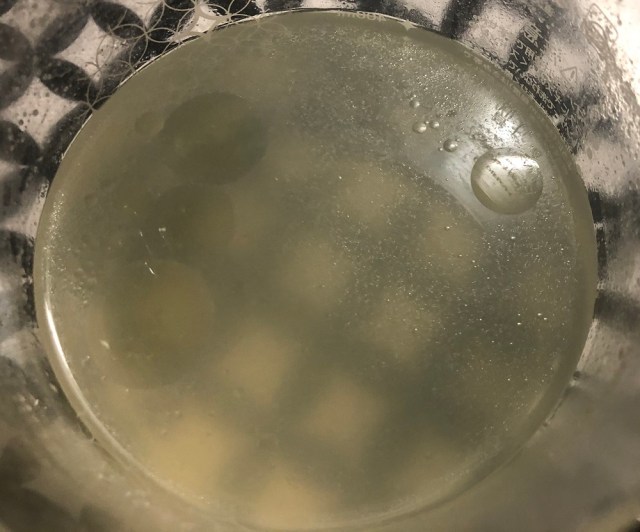


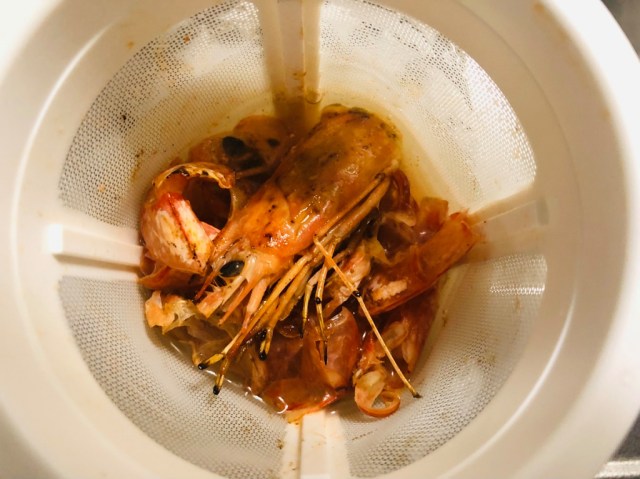
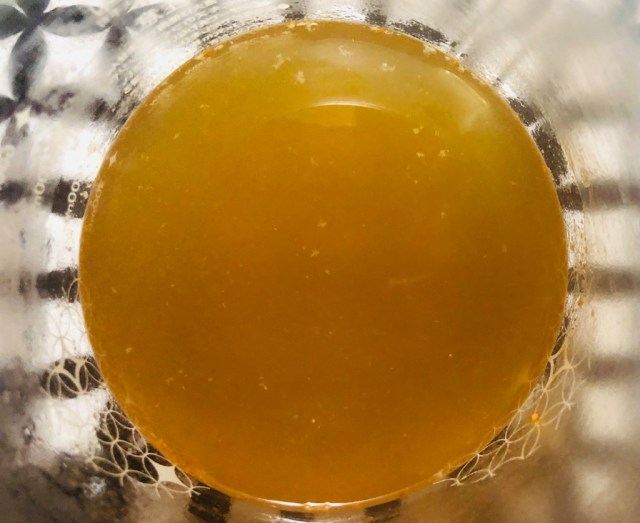
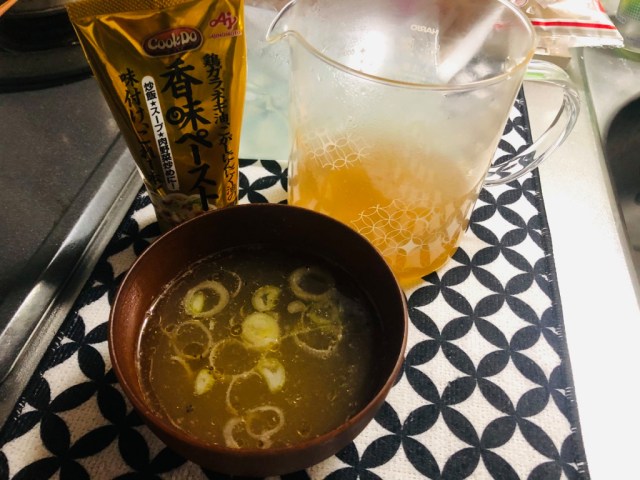
 We revolutionize tapioca tea by making a savory hot pot dinner with both ingredients【SoraKitchen】
We revolutionize tapioca tea by making a savory hot pot dinner with both ingredients【SoraKitchen】 Newest weird Japanese vending machine beverage: Dashi fish soup from…Coca-Cola?!?
Newest weird Japanese vending machine beverage: Dashi fish soup from…Coca-Cola?!? Move over coffee! Japan’s first ever pour-over drip-dashi is a healthier, tastier option
Move over coffee! Japan’s first ever pour-over drip-dashi is a healthier, tastier option Miso soup capsule toys look good enough to eat, come with recipes to make the real thing!【Photos】
Miso soup capsule toys look good enough to eat, come with recipes to make the real thing!【Photos】 Which noodles, other than Okinawa soba, pair best with Okinawa soba broth?【Taste Test】
Which noodles, other than Okinawa soba, pair best with Okinawa soba broth?【Taste Test】 Red light district sushi restaurant in Tokyo shows us just how wrong we were about it
Red light district sushi restaurant in Tokyo shows us just how wrong we were about it Historical figures get manga makeovers from artists of Spy x Family, My Hero Academia and more
Historical figures get manga makeovers from artists of Spy x Family, My Hero Academia and more Japan’s massive matcha parfait weighs 6 kilos, contains hidden surprises for anyone who eats it
Japan’s massive matcha parfait weighs 6 kilos, contains hidden surprises for anyone who eats it Haku is…Chihiro’s dead brother? Studio Ghibli fans blown away by Spirited Away theory
Haku is…Chihiro’s dead brother? Studio Ghibli fans blown away by Spirited Away theory Sandwiches fit for a sumo served up in Osaka【Taste Test】
Sandwiches fit for a sumo served up in Osaka【Taste Test】 Beautiful Red and Blue Star luxury trains set to be Japan’s new Hokkaido travel stars
Beautiful Red and Blue Star luxury trains set to be Japan’s new Hokkaido travel stars Pokémon Sleep camping suite and guestrooms coming to Tokyo Hyatt along with giant Snorlax burgers
Pokémon Sleep camping suite and guestrooms coming to Tokyo Hyatt along with giant Snorlax burgers Japan’s cooling body wipe sheets want to help you beat the heat, but which work and which don’t?
Japan’s cooling body wipe sheets want to help you beat the heat, but which work and which don’t? Tokyo Tsukiji fish market site to be redeveloped with 50,000-seat stadium, hotel, shopping center
Tokyo Tsukiji fish market site to be redeveloped with 50,000-seat stadium, hotel, shopping center Starbucks Japan adds a Motto Frappuccino to the menu for a limited time
Starbucks Japan adds a Motto Frappuccino to the menu for a limited time McDonald’s new Happy Meals offer up cute and practical Sanrio lifestyle goods
McDonald’s new Happy Meals offer up cute and practical Sanrio lifestyle goods All-you-can-drink Starbucks and amazing views part of Tokyo’s new 170 meter-high sky lounge
All-you-can-drink Starbucks and amazing views part of Tokyo’s new 170 meter-high sky lounge More foreign tourists than ever before in history visited Japan last month
More foreign tourists than ever before in history visited Japan last month Japanese ramen restaurants under pressure from new yen banknotes
Japanese ramen restaurants under pressure from new yen banknotes French Fries Bread in Tokyo’s Shibuya becomes a hit on social media
French Fries Bread in Tokyo’s Shibuya becomes a hit on social media Studio Ghibli releases new action figures featuring Nausicaä of the Valley of the Wind characters
Studio Ghibli releases new action figures featuring Nausicaä of the Valley of the Wind characters New private rooms on Tokaido Shinkansen change the way we travel from Tokyo to Kyoto
New private rooms on Tokaido Shinkansen change the way we travel from Tokyo to Kyoto Starbucks reopens at Shibuya Scramble Crossing with new look and design concept
Starbucks reopens at Shibuya Scramble Crossing with new look and design concept Studio Ghibli glasses cases let anime characters keep an eye on your spectacles
Studio Ghibli glasses cases let anime characters keep an eye on your spectacles Beautiful Ghibli sealing wax kits let you create accessories and elegant letter decorations【Pics】
Beautiful Ghibli sealing wax kits let you create accessories and elegant letter decorations【Pics】 Studio Ghibli releases Kiki’s Delivery Service chocolate cake pouches in Japan
Studio Ghibli releases Kiki’s Delivery Service chocolate cake pouches in Japan New definition of “Japanese whiskey” goes into effect to prevent fakes from fooling overseas buyers
New definition of “Japanese whiskey” goes into effect to prevent fakes from fooling overseas buyers Our Japanese reporter visits Costco in the U.S., finds super American and very Japanese things
Our Japanese reporter visits Costco in the U.S., finds super American and very Japanese things Studio Ghibli unveils Mother’s Day gift set that captures the love in My Neighbour Totoro
Studio Ghibli unveils Mother’s Day gift set that captures the love in My Neighbour Totoro New Japanese KitKat flavour stars Sanrio characters, including Hello Kitty
New Japanese KitKat flavour stars Sanrio characters, including Hello Kitty New Pokémon cakes let you eat your way through Pikachu and all the Eevee evolutions
New Pokémon cakes let you eat your way through Pikachu and all the Eevee evolutions Disney princesses get official manga makeovers for Manga Princess Cafe opening in Tokyo
Disney princesses get official manga makeovers for Manga Princess Cafe opening in Tokyo Sales of Japan’s most convenient train ticket/shopping payment cards suspended indefinitely
Sales of Japan’s most convenient train ticket/shopping payment cards suspended indefinitely Sold-out Studio Ghibli desktop humidifiers are back so Totoro can help you through the dry season
Sold-out Studio Ghibli desktop humidifiers are back so Totoro can help you through the dry season Japanese government to make first change to romanization spelling rules since the 1950s
Japanese government to make first change to romanization spelling rules since the 1950s Ghibli founders Toshio Suzuki and Hayao Miyazaki contribute to Japanese whisky Totoro label design
Ghibli founders Toshio Suzuki and Hayao Miyazaki contribute to Japanese whisky Totoro label design Doraemon found buried at sea as scene from 1993 anime becomes real life【Photos】
Doraemon found buried at sea as scene from 1993 anime becomes real life【Photos】 Tokyo’s most famous Starbucks is closed
Tokyo’s most famous Starbucks is closed One Piece characters’ nationalities revealed, but fans have mixed opinions
One Piece characters’ nationalities revealed, but fans have mixed opinions We asked a Uniqlo employee what four things we should buy and their suggestions didn’t disappoint
We asked a Uniqlo employee what four things we should buy and their suggestions didn’t disappoint Princesses, fruits, and blacksmiths: Study reveals the 30 most unusual family names in Japan
Princesses, fruits, and blacksmiths: Study reveals the 30 most unusual family names in Japan How to make tonkotsu ramen at home 【SoraKitchen】
How to make tonkotsu ramen at home 【SoraKitchen】 McKatsudon: Easy to make with new spicy chicken nuggets from McDonald’s Japan
McKatsudon: Easy to make with new spicy chicken nuggets from McDonald’s Japan How to turn your leftover instant ramen broth into delicious chawanmushi Japanese egg custard
How to turn your leftover instant ramen broth into delicious chawanmushi Japanese egg custard BonAppetour startup lets you cook and dine with Tokyo locals in their homes
BonAppetour startup lets you cook and dine with Tokyo locals in their homes Coca-Cola debuts drinkable dashi delicacy for diners on the dash
Coca-Cola debuts drinkable dashi delicacy for diners on the dash Japanese company produces organic miso powder in collaboration with model Miranda Kerr【Video】
Japanese company produces organic miso powder in collaboration with model Miranda Kerr【Video】 Which Japanese conveyor belt sushi chain has the best aosa miso soup?【Taste test】
Which Japanese conveyor belt sushi chain has the best aosa miso soup?【Taste test】 Holy noodles! Japanese restaurant serves up some very unusual udon
Holy noodles! Japanese restaurant serves up some very unusual udon Bottles containing flying fish now available from Japanese vending machines in Tokyo
Bottles containing flying fish now available from Japanese vending machines in Tokyo How to make okonomiyaki at home【SoraKitchen】
How to make okonomiyaki at home【SoraKitchen】 Which Japanese conveyor belt sushi chain has the best egg sushi?【Taste test】
Which Japanese conveyor belt sushi chain has the best egg sushi?【Taste test】 A Japanese hot pot with an elevator inside is just what we need to make it through winter【Video】
A Japanese hot pot with an elevator inside is just what we need to make it through winter【Video】 Put a unique twist on your oatmeal by turning it into some Japanese comfort food
Put a unique twist on your oatmeal by turning it into some Japanese comfort food Alcoholic soup in a cup now on sale to keep Japan warm and buzzed this winter
Alcoholic soup in a cup now on sale to keep Japan warm and buzzed this winter Which conveyor belt sushi place’s chawanmushi egg custard is the best? We investigate【Taste Test】
Which conveyor belt sushi place’s chawanmushi egg custard is the best? We investigate【Taste Test】 How to turn McDonald’s chicken nuggets into tasty katsudon in five minutes【SoraKitchen】
How to turn McDonald’s chicken nuggets into tasty katsudon in five minutes【SoraKitchen】
Leave a Reply